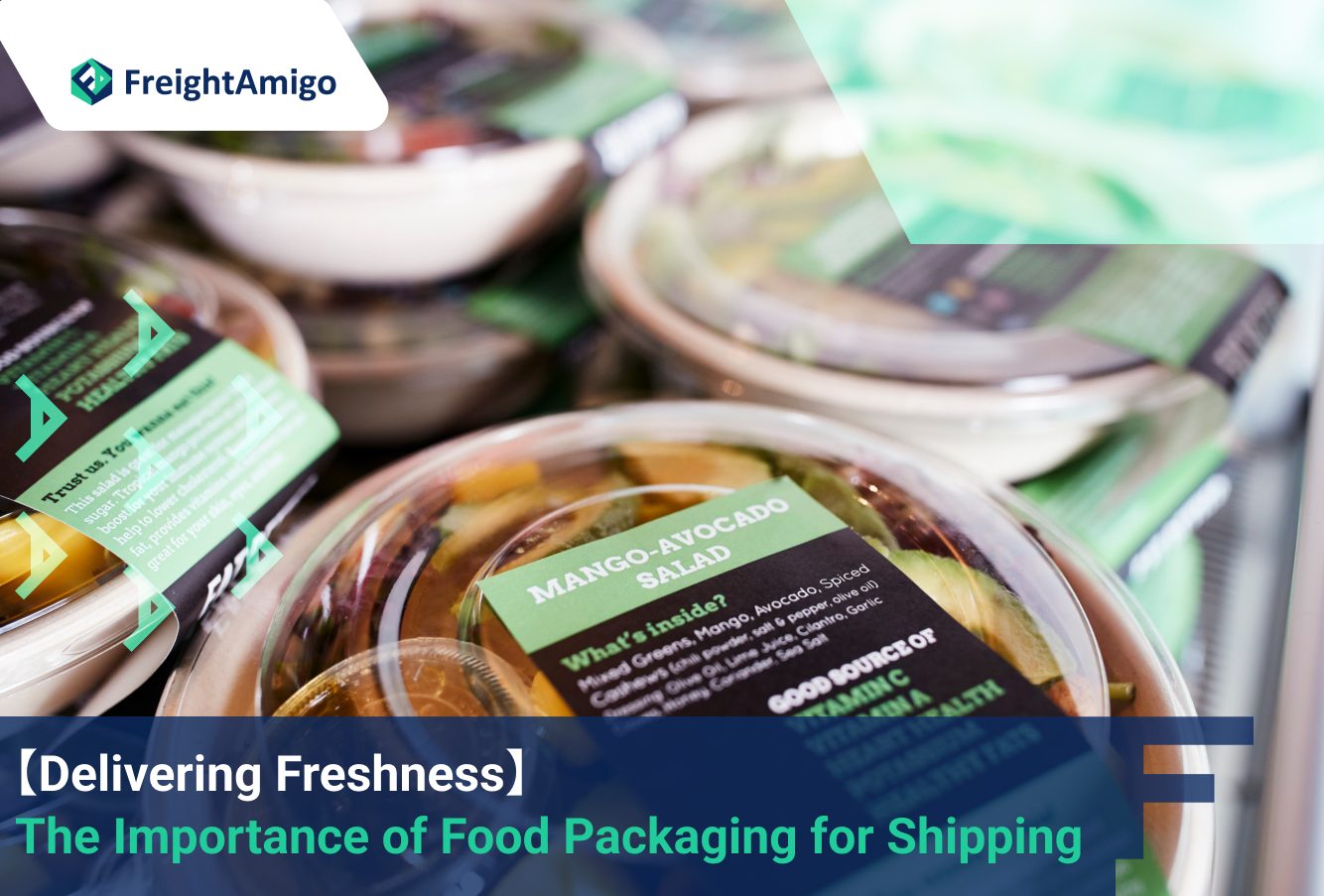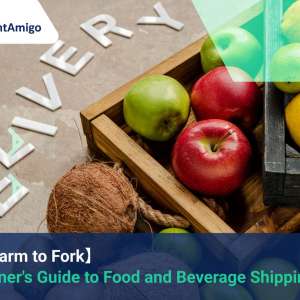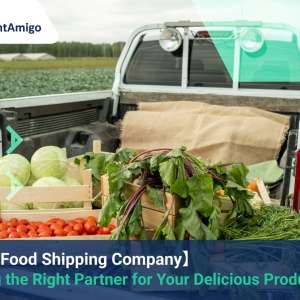In the world of food shipping, the role of food packaging and labeling cannot be overstated. Whether it’s a delicious homemade treat or a carefully crafted product from a large company, the packaging plays a vital role in preserving the freshness and quality of the food. This article will explore the importance of food labeling and packaging, the different types of packaging materials, how to choose the right packaging, and the regulations and requirements for food packaging. By the end, you’ll understand how effective packaging can impact customer satisfaction and brand reputation.
Latest update on 5 February, 2024 by Aiden Ng– Marketing Analyst at FreightAmigo
Want to compare the best Express, Air Freight, Sea Freight, Rail Freight & Trucking rates so as to have better control on cost?
Importance of Food Labeling
Food labeling serves as a crucial communication tool between the food producer and the consumer. It provides essential information about the product, such as its ingredients, nutritional value, allergens, and potential hazards. When it comes to shipping food, labels play an even more critical role. Clear and accurate labeling ensures that the recipient understands what they are receiving and can make informed decisions about the product’s suitability.
Furthermore, food labeling helps to establish trust between the brand and the consumer. By providing transparent and accurate information, brands can build a reputation for quality and reliability. For example, if a customer has specific dietary requirements or allergies, proper labeling allows them to confidently choose products that meet their needs. This can lead to repeat purchases and positive word-of-mouth recommendations, ultimately benefiting the brand.
Importance of Food Packaging for Product Freshness
Food packaging serves as the first line of defense in preserving the freshness and quality of products during shipping. It protects the food from external factors such as moisture, oxygen, and light, which can cause spoilage and degradation. The right packaging helps to maintain the flavor, texture, and nutritional value of the food, ensuring that it reaches the consumer in optimal condition.
One of the key considerations in food packaging is the choice of materials. Different types of packaging materials have varying properties and advantages. For example, plastic packaging is lightweight, durable, and flexible, making it suitable for a wide range of food products. On the other hand, glass packaging provides an excellent barrier against oxygen and moisture, making it ideal for products that are sensitive to these elements.
Types of Food Packaging Materials
When it comes to food packaging, there is a wide variety of materials to choose from. Each material has its own unique properties and benefits, making it suitable for specific types of food products. Here are some commonly used food packaging materials:
- Plastic: Plastic packaging is lightweight, cost-effective, and versatile. It can be molded into various shapes and sizes, making it suitable for a wide range of food products. However, it is important to choose food-grade plastic that is safe for contact with food.
- Glass: Glass packaging provides excellent protection against oxygen and moisture. It is non-reactive, preserving the flavor and quality of the food. Glass containers are also reusable and recyclable, making them an environmentally friendly choice.
- Paper and cardboard: Paper and cardboard packaging are commonly used for dry food products such as cereals, snacks, and bakery items. They are lightweight, biodegradable, and can be easily customized with branding and labeling.
- Metal: Metal packaging, such as cans and tins, offers durability and protection from light, moisture, and oxygen. It is commonly used for canned goods, beverages, and processed foods.
Choosing the right packaging material depends on factors such as the type of food product, its shelf life, and the shipping conditions. It is essential to consider these factors to ensure the product reaches the consumer in optimal condition.
Choosing the Right Food Packaging for Your Products
Selecting the appropriate food packaging for your products is crucial for maintaining the freshness and quality of the food during shipping. Here are some key considerations when choosing food packaging:
- Product characteristics: Consider the specific requirements of your food product. For example, if it is perishable or requires a specific temperature range for storage, you may need packaging with insulation or temperature control features.
- Packaging material: Evaluate the properties of different packaging materials and choose the one that best suits your product. Consider factors such as its barrier properties, compatibility with the food, and environmental impact.
- Packaging design: The design of the packaging should be practical and convenient for shipping. Consider factors such as stackability, ease of opening and closing, and space efficiency.
- Branding and labeling: Packaging is an excellent opportunity to showcase your brand and communicate with consumers. Consider incorporating your brand logo, colors, and other design elements that align with your brand identity. Ensure that the labeling complies with the relevant regulations and provides accurate information.
By carefully considering these factors, you can choose the right food packaging that ensures the freshness and quality of your products during shipping.
Food Packaging Regulations and Labeling Requirements
Food packaging is subject to various regulations and labeling requirements to ensure consumer safety and prevent misleading information. These regulations vary by country and region, so it’s essential to familiarize yourself with the specific requirements for the market you operate in. Here are some key aspects to consider:
- Ingredient labeling: Clearly list all the ingredients used in the product, including any allergens, in accordance with the applicable regulations.
- Nutrition labeling: Provide accurate and detailed nutritional information per serving size, including calories, fat, protein, carbohydrates, and other relevant nutrients.
- Allergen labeling: Highlight any common allergens present in the product, such as peanuts, tree nuts, dairy, soy, wheat, and shellfish.
- Country of origin labeling: Clearly indicate the country of origin of the product to comply with import/export regulations and inform consumers about the product’s source.
- Date labeling: Include the manufacturing date, expiration date, or best before date to ensure consumers can make informed decisions about product freshness and safety.
By understanding and adhering to these regulations and labeling requirements, you can ensure that your food packaging meets the necessary standards and provides consumers with accurate information.
Tips for Effective Food Packaging for Shipping
In addition to choosing the right packaging materials and complying with regulations, here are some tips for effective food packaging for shipping:
- Proper sealing: Ensure that the packaging is properly sealed to prevent leakage and contamination during transit. This may involve using heat sealing, adhesive tapes, or other suitable sealing methods.
- Cushioning and protection: Use appropriate cushioning materials, such as bubble wrap or foam inserts, to protect the food from impact and prevent breakage.
- Temperature control: If your product requires temperature control, consider using insulated packaging or including ice packs or gel packs to maintain the desired temperature.
- Labeling for fragile items: If your food product is fragile or requires careful handling, clearly label the packaging with appropriate instructions to ensure it is handled with care during shipping.
- Sustainable packaging: Consider using environmentally friendly packaging materials and minimizing unnecessary packaging to reduce waste and improve sustainability.
By implementing these tips, you can enhance the effectiveness of your food packaging and ensure that your products arrive at their destination in optimal condition.
Tips for Labeling Food and Beverage Packages
Proper labeling of food and beverage packages is essential for providing accurate information and complying with regulations. Here are some tips for effective labeling:
- Clear and legible: Ensure that the labels are clear, legible, and easy to read. Use a font size and style that is appropriate for the intended audience.
- Accurate and complete information: Provide accurate and complete information about the product, including the ingredients, nutritional value, allergens, and any other relevant details.
- Eye-catching design: Make the labels visually appealing to catch the attention of consumers. Incorporate your brand elements, such as colors and logos, to create a cohesive and recognizable design.
- Placement and visibility: Position the labels in a prominent and easily visible location on the packaging. Avoid covering important information with seals or other packaging materials.
- Compliance with regulations: Ensure that the labels meet the specific regulations and requirements for the target market. Stay updated with any changes or updates to the regulations to ensure ongoing compliance.
By following these tips, you can create effective and compliant labels that provide consumers with the necessary information about your food and beverage products.
Conclusion: The Impact of Food Packaging on Customer Satisfaction and Brand Reputation
Food packaging plays a vital role in ensuring the freshness, quality, and safety of food products during shipping. The right packaging materials, combined with effective labeling and compliance with regulations, can significantly impact customer satisfaction and brand reputation. Clear and accurate labeling builds trust with consumers, while proper packaging preserves the freshness and quality of the food. By choosing the right packaging materials, designing practical packaging, and following labeling regulations, you can deliver freshness and ensure customer satisfaction. Remember, when it comes to food packaging for shipping, delivering freshness is key.
There are different options for cargo transportation. If you want to choose the most convenient and suitable solution, it is best to have the full support of logistics experts! If you are planning to ship goods overseas, please go to the FreightAmigo page for inquiries.
Read More:
How to Ship Food Safely and Efficiently
【From Farm to Fork】 A Beginner’s Guide to Food and Beverage Shipping
【The Evolution of Cold Chain Technologies】 Ensuring Optimal Temperature Control in Shipping
【Perfect Food Shipping Company】Choosing the Right Partner for Your Delicious Products
If you have any inquiries on logistics/supply chain, feel free to contact FreightAmigo now:
Chat with us online | Hotline: +852 28121686 | WhatsApp: +852 27467829









































